
Clothing manufacturers vary sizes according to brand and style. Take your own measurements to get a customized fit for pants, tailor your trousers or customize a pattern to sew your own pants. Many brands have general, regular sizes for women between 5-foot-4 and 5-foot-10, with adjustments for the "petite" and "tall" builds. Children's pants sizes can vary according to body proportions as they grow. You can save money and widen your options by purchasing standard-sized pants and tailoring them to fit your body measurements.
Men
Measure the following dimensions with a loose hold on your tape measure: Natural waist Top of foot to crotch (for your inseam measurement) Natural waist to top of foot (for the overall length)
Write down the following measurements: Height Waist Inseam Length
Check whether your height measurement puts you in the "regular" build category by comparing your height and waist measurements against your brand's size chart. For example, JC Penney's men's size chart for a regular build (of height 5-foot-8 to 5-foot-11) is: Regular small: Waist = 28 to 30 inches Regular medium: Waist = 32 to 34 inches Regular large: Waist = 36 to 38 inches Regular extra large: Waist = 40 to 42 inches Regular extra extra large: Waist = 44 to 46 inches
Check whether your height measurement puts you in the "tall" build category by comparing your height and waist measurements against your brand's size chart. For example, JC Penney's men's size chart for a tall build (of height 6 feet to 6-foot-3) is: Tall medium: Waist = 32 to 34 inches Tall large: Waist = 36 to 38 inches Tall extra large: Waist = 40 to 42 inches Tall extra extra large: Waist = 44 to 46 inches
Measure your pant leg according to your inseam and length. Fold and hem accordingly.
Women
Measure the following dimensions with a loose hold on your tape measure: Natural waist Hips Top of foot to crotch (for your inseam measurement) Natural waist to top of foot (for the overall length)
Write down the following measurements: Height Waist Hips Inseam Length
Compare your height measurement against the "build" category in your brand's size chart. For example, JC Penney's misses size chart has the following build categories: Petite: Height = 4-foot-11 to 5-foot-3 Regular: Height = 5-foot-3 1/2 to 5-foot-7 1/2 Tall: Height = 5-foot-8 to 5-foot-11 Ultra tall: Height = 5-foot-11 1/2 to 6-foot-2
Compare your waist and hip measurements against your brand's size chart according to your build category. For example, JC Penney's misses size chart for regular, tall and ultra tall builds uses the same size chart: Size 0 (extra small): Waist = 24 inches and hips = 34.5 inches Size 2 (extra small):: Waist = 25 inches and hips = 35.5 inches Size 4 (small): Waist = 26 inches and hips = 36.5 inches Size 6 (small): Waist = 27 inches and hips = 37.5 inches Size 8 (medium): Waist = 28 inches and hips = 38.5 inches Size 10 (medium): Waist = 29 inches and hips = 39.5 inches Size 12 (large): Waist = 30.5 inches and hips = 41 inches Size 14 (large): Waist = 31 to 32 inches and hips = 42.5 inches Size 16 (extra large): Waist = 33.5 inches and hips = 44 inches Size 18 (extra large): Waist = 35.5 inches and hips = 46 inches Size 20 (extra extra large): Waist = 37.5 inches and hips = 48 inches
Measure your pant leg according to your inseam and length. Fold and hem accordingly, if needed.
Children
Measure the following dimensions with a loose hold on your tape measure: Natural waist Hips (for your seat) Top of foot to crotch (for your inseam measurement) Natural waist to top of foot (for the overall length)
Write down the following measurements: Height Waist Seat Inseam Length
Compare your child's height, waist and seat measurements to identify the "build" category in your brand's size chart. For example, JC Penney's kid's size chart has the following guidelines for build categories according to frame and body proportions for boys and girls (note: the difference between the waist and seat can be greater for girls): Slim: Small frame and thin body where the waist is about 5 to 6 inches less than the seat Regular: Average frame and proportions where the waist is about 4 to 5 inches less than the seat Plus or husky: Fuller body in proportion to height where the waist measurement is greater than 27 inches and is about 4 to 6 inches less than the seat.
Compare your child's waist and seat measurements against your brand's size chart. For example, JC Penney's kid's regular (build) size chart is: Girls size 7 (small): Waist = 23 inches and seat = 27 inches Girls size 8 (small): Waist = 23 inches and seat = 29 inches Boys size 8 (small): Waist = 23 inches and seat = 27 inches Girls size 10 (medium): Waist = 24 inches and seat = 29 inches Boys size 10 (medium): Waist = 24 inches and seat = 28 inches Girls size 12 (medium): Waist = 25 inches and seat = 31 inches Boys size 12 (medium): Waist = 26 inches and seat = 30 inches Girls size 14 (large): Waist = 26 inches and seat = 34 inches Boys size 14 (large): Waist = 27 inches and seat = 32 inches Girls size 16 (large): Waist = 27 inches and seat = 36 inches Boys size 16 (large): Waist = 28 inches and seat = 34 inches
Measure your pant leg according to your inseam and length. Fold and hem accordingly.
Related Articles
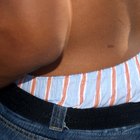
How to Determine Boxer Brief Size

The Differences Between Slim Fit and ...
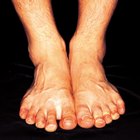
How to Measure Your Feet With a Regular ...

What Does Shoe Width E, EE, D, and DD ...
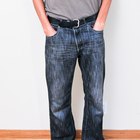
How to Size Men's Jeans

Is a Kids' Size Six Shoe the Same as a ...

Good Bikinis for Pear-Shaped Bodies

How to Convert Girls' Clothing Sizes to ...

How to Buy Jeans for Girls With Wide ...

What Is Comparable to a Size 10 Dress ...
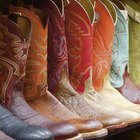
How to Measure Foot Size for Cowboy ...

How to Hem Zippered Track Pants
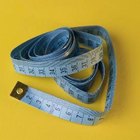
How to Measure Women's & Girls Clothing ...

How to Dress a Big Stomach & Small Legs

What Kind of Body Types Do Levi's Jeans ...

How to Dress a Petite Hourglass Shape

What Does Big Kids Mean in Shoe Sizing?

What Is Inseam vs. Waist Size in Jeans?

How to Size Boys' Clothes

What Is the Average Breast Measurement?
References
Resources
Tips
- All brands vary slightly in sizing. Check the sizing chart for your specific brand or store (such as Gap or Old Navy).
- Buy pants that fit in the waist and rise and take them in (i.e., tailor them) along the leg seams and bottom hem, if needed.
Writer Bio
Regina Edwards has been a freelance writer since 1990. She has penned video scripts, instructional manuals, white papers and abstracts. She has also ghostwritten diabetes journals. Edwards is a scuba instructor and Usui and Karuna Reiki teacher. She holds a Bachelor of Science from Saint Joseph's University.
Photo Credits
measuring image by anna karwowska from Fotolia.com